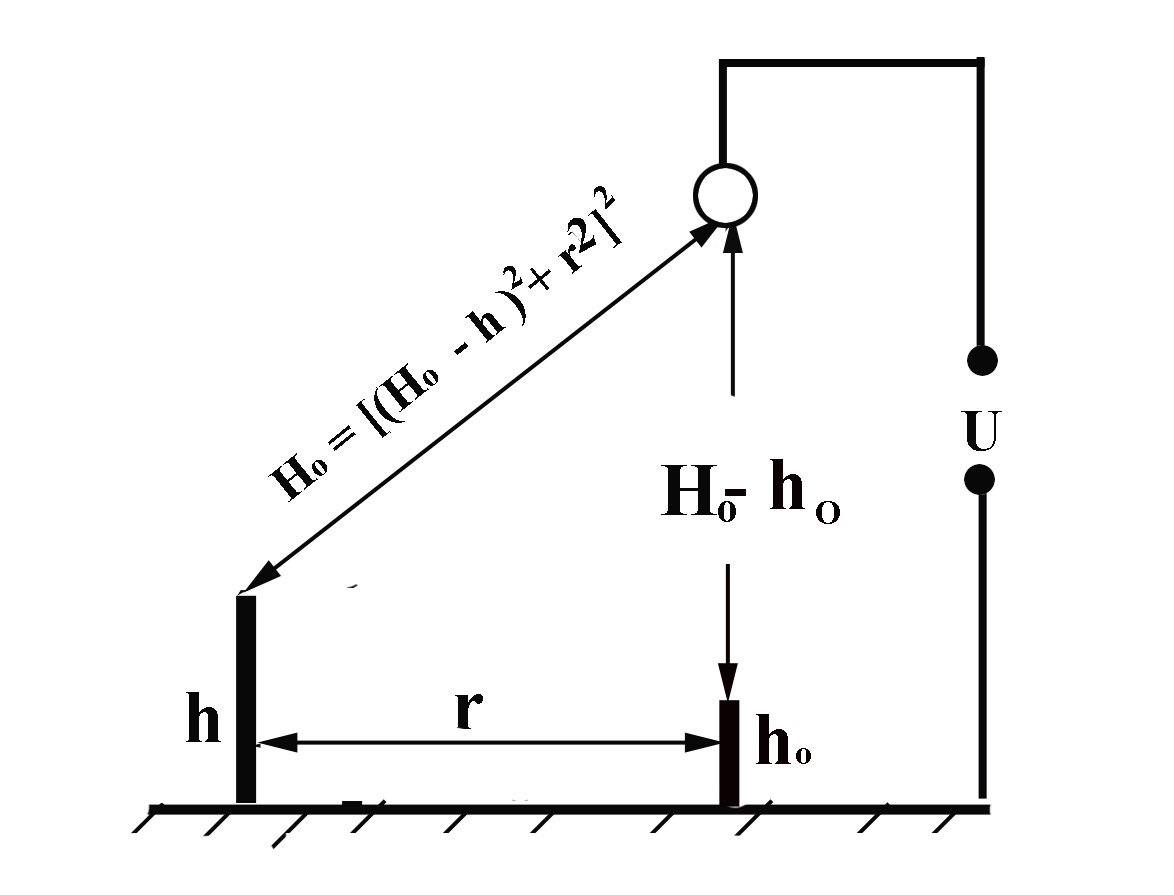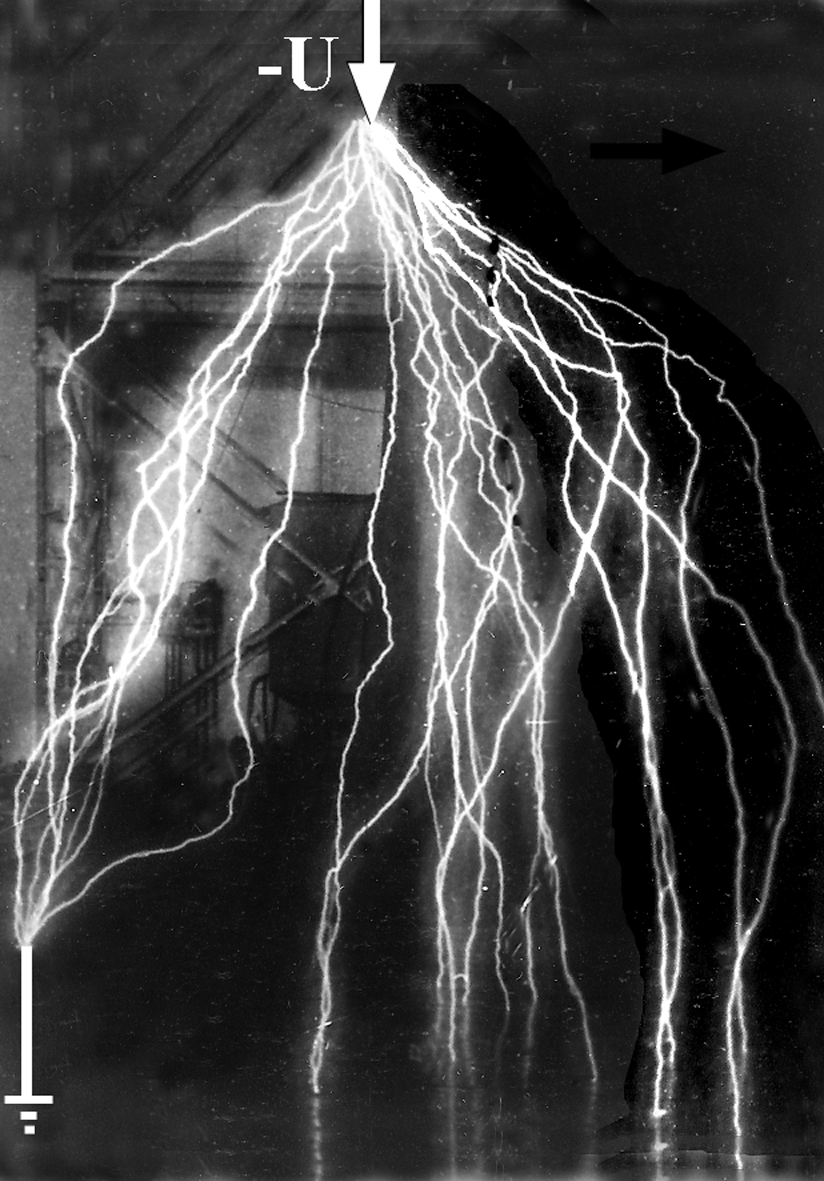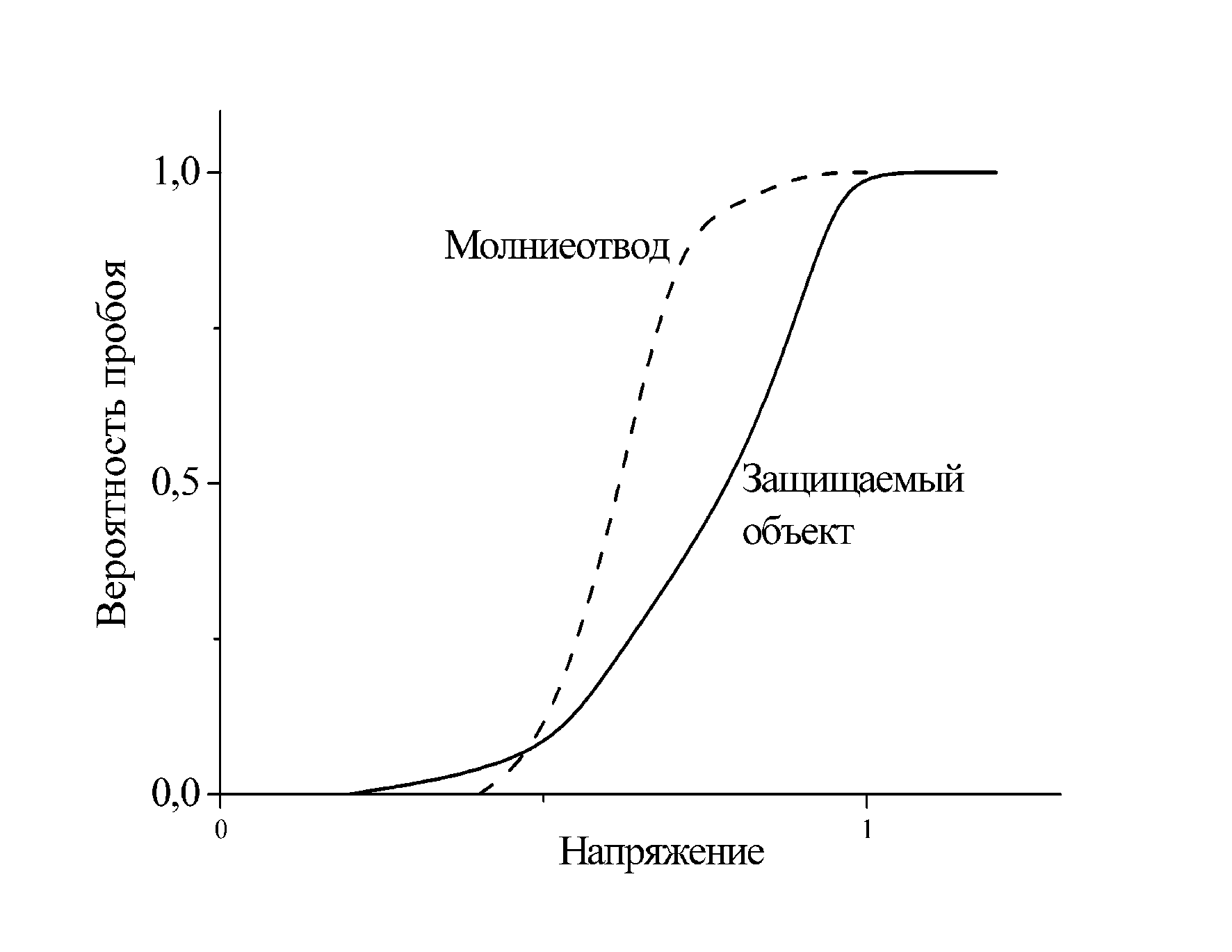From the series of articles Complete Information on the Protection Zones of the Lightning Arrester".
The answer to this question could be obtained even in the times of Franklin and Lomonosov. The experiments have shown that the lightning is a giant long spark. A similar spark could be produced in the laboratory even in the 18th century using the induction machine that had already existed then. The best of them provided a voltage of several hundred kilovolts, which is enough to form sparks with the length of several centimeters. This physical model can be a basis for the qualitative test.

Fig. 1.
Look at the earthed electrode arrangement in Fig. 1. The distance to the central earthed electrode (an object model) is precisely the same as the distance to the second (a lightning arrester model) offset to distance r from it. A high-voltage electrode is connected to a high-voltage source simulating the lightning being formed. You can turn on high voltage and trace the spark path. The experiment should be repeated to obtain convincing statistics. Its result is evident: each rod will receive 50% discharges. Now, if we slightly increase the height of the rod simulating the lightning arrester, its discharge gap will become shorter, and it will be easier to cover with the electric discharge. However, do no think that it will collect all discharges. The share of discharges to the lightning arrester model will surely increase, but there will be no 100% probability. A portion of spark channels will go along the longest path, i.e. to the object.
The effect is explained clearly by a visual demonstration. You can see a photo of a large number of spark laboratory discharges (Fig. 2). Almost none of them repeat the each other's paths. Different paths result in different times of the discharge formation and, as a result, in various breakthrough voltages. Today, it is easy to measure the breakthrough voltages. This is the way their statistics will look like (Fig. 3). In some instances, the breakthrough voltage of a longer gap to the object will be lower than for the short one, i.e. for the lightning arrester. Then, the discharge will go to the object. This way, the lightning breakthrough will be shown that goes past the lightning arrester to the protected object.

Fig. 2.
By increasing the lightning arrester’s height and, thus, reducing the distance from the head of the lightning channel to it, we can increase the share of the collected strikes, but some lightning breakthrough probability to the object will remain, even though it is very small. Therefore, the lightning arrester protection efficiency is much lower than 1, and with equal heights of the object and the lightning arrester it cannot be more than 0.5.

Fig. 3.
Вероятность пробоя - Breakthrough probability
Молниеотвод - Lightning arrester
Защищаемый объект - Protected object
Напряжение - Voltage
Therefore, as a result of the qualitative test, two important features of the protection zone of the lightning rod were revealed. First, the zone top may not coincide with the lightning arrester’s top. With the protection reliability more than 0.5, the lightning arrester should be higher than the protected object.
Second, along with the increase in the horizontal distance between the lightning arrester and the object, the limit height of the object should decrease to keep the distance
 ,
,
and the reliability of the object protection against the direct lightning strikes into it along with the height. Based on this, the idea of the protection zone as a cone-shaped surface has appeared, with the top located in the axis of the lightning arrester, under its top, and its radius increasing along with approaching the earth.
There are no differences related to the second position, but the protection zone’s top is often aligned with the lightning arrester’s top. It was done like this, e.g., without any reasons, in the standard IEC 62305, although the incorrectness of such position does not cause any doubts based on the considerations above, and the error is the most significant upon the heights of the lightning arrester and the protected object getting closer to each other.
Why does the protection zone have a circular cross-section?
Read further "2. What Can We expect of the Laboratory Tests of Lightning Arresters?"
Related Articles:


 Lightning Protection of Large Territories: Parks, Grounds, Plant Territories. Page 1
Lightning Protection of Large Territories: Parks, Grounds, Plant Territories. Page 1
 Lightning Protection of Large Territories: Parks, Grounds, Plant Territories. Page 2
Lightning Protection of Large Territories: Parks, Grounds, Plant Territories. Page 2
 Lightning Protection of Large Territories: Parks, Grounds, Plant Territories. Page 3
Lightning Protection of Large Territories: Parks, Grounds, Plant Territories. Page 3

